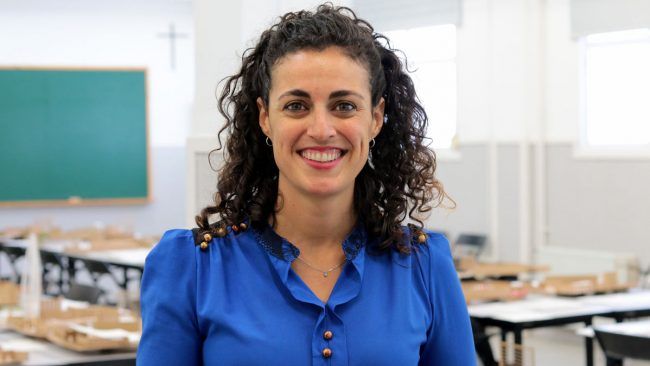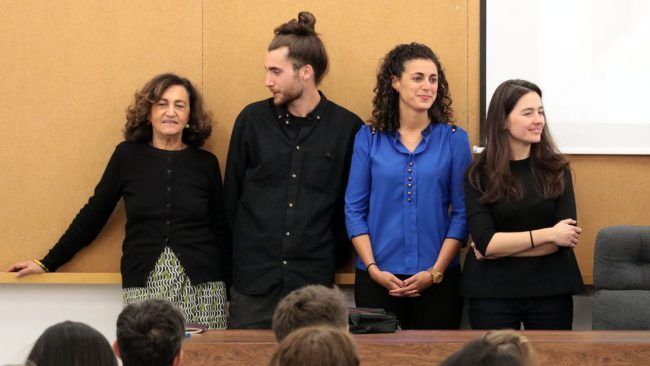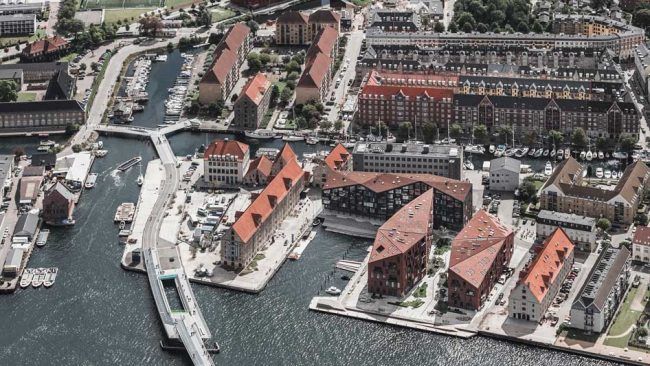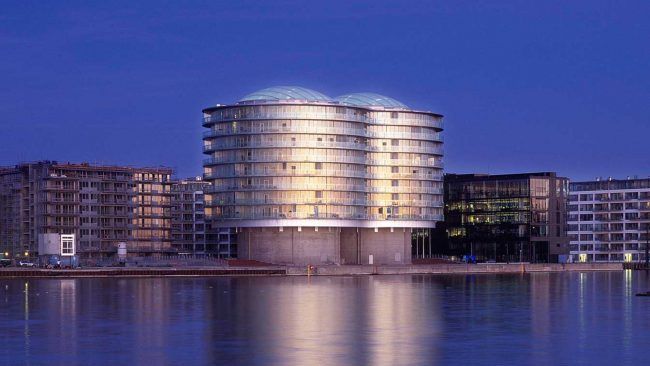In 2011 she graduated in Valencia but has since been charmed by Copenhagen. Natalia Guerrero, architect and CEU alumni, has already spent 6 years working in an important studio in the Danish capital where she has developed infrastructure and public services projects.

She returned to the ESET as a member of the jury for our international workshop ConnectA Copenhagen, we took advantage this to talk to her about architecture, urbanism and of course Arne Jacobsen.
Natalia, what has your journey to Copenhagen been like?
I graduated in 2011, a very complicated time for architects in our country. Faced with the lack of reliable work in Valencia, I moved, almost by chance, to Copenhagen. In the beginning, I was only going to go for a short amount of time, 6 months or so, but it has now been 6 years and I am completely obsessed with the city. I love Copenhagen, the way of life, the opportunities, the working conditions… I am very happy that I have been able to transfer everything that I learnt at university to a Danish studio. What I like so much about Denmark is that you can take your ideas, combine them with your knowledge and experience and learn from them… and the fact that others can also learn from you!
I am currently working as an Architect for PLH Arkitekter in their infrastructure department. Here we work on projects related to things such as the metro network or water treatment plants and that is exactly what I am up to right now. A project to do with the collection of rainwater, something that is very important in Denmark. In general so is anything to do with green and sustainable architecture.
I am passionate about my job; it’s true that sometimes you have to argue with the engineers to get what you want. I have learned to both develop my ideas and defend my idea of architecture.

I was previously working for Bjarke Ingels, a unique experience and I learned a lot from it. During that time, I lived and breathed for the studio, it was a great opportunity to learn and work on big projects, it was extraordinary. It is a very powerful studio and it was a very intense period of my life.
You managed to get into Architecture through some of Copenhagen’s big names. Did you cope well in your new job once you arrived in the city or where there any moments when you felt insecure?
It was the complete opposite, having studied in Spain played in my favour. Danish studios see Spanish architects as a great advantage because they are very versatile: we, like them, have artistic training, but also a very solid technical base. For them it’s like getting a 2 for 1 deal because, generally in Scandinavia, architecture is very much linked to art, design and aesthetics.
In my opinion, they lack a certain technical capacity. Unlike us, they do not develop this at University but through professional work. It is because of that that I, like any other recently graduated Spanish architects, seem better prepared.
Do you think there is something special that defines architecture in the Nordic countries that is different to southern Europe?
Pretty much anything that is to do with design. There everything is simple, maximum simplicity in the structures and the materials: the famous phrase: less is more.
“ANYTHING TO DO WITH GREEN AND SUSTAINABLE ARCHITECTURE IS VERY IMPORTANT IN DENMARK AT THE MOMENT”
On the other they really take into account the communal areas, these spaces act as a hub for people getting together, it’s not just the inside of buildings but also the external environment. Perhaps it is because of the weather conditions that we spend so much time inside…but you have to take advantage of the outside spaces when you can!
Who would be your architectural references in Denmark, those names that every architect should know?
Since being in Copenhagen, I have learnt a lot about the architect Arne Jacobsen who is absolutely fantastic! He has created some powerful projects especially considering the time that they were developed.

It’s not all about the classics! At the moment there are new architectural studios which are giving us a lot to talk about. Studios like BIG and COBE Architects. These are two of my favourite studios because they have a fresh take on architecture and an interesting way of looking at the social hub of buildings.
As you know, we have decided to dedicate this year’s series of ConnectA to Danish architecture and it is the precursor of the students’ trip to Copenhagen in March. What advice can you give them for this trip?
Denmark has some very noteworthy projects. It’s not all just to do with new work but there is also this idea of restoration and it is something that happens quite frequently: pick an old building or one that isn’t being used and transform and convert it into something new and interesting.
On the other hand I would advise then to look into Arne Jacobsen. One of his pieces, which I personally find fascinating but is perhaps the least well known, is the Skovshoved petrol station that he did in the 30s.
Another interesting building is the MVRDV studio next to the canal. It came about from the restoration of two grain stores of an old soya warehouse. They have converted these grain stores into residential buildings keeping the apartments on the outer most part; I believe the use of light in the space that has created something very special.

They should also visit the north of the city, which is the part that is being developed into the modern city. Lots of residential buildings and office blocks are being built on reclaimed land but they are also restoring the old marina buildings. There is something attractive about them all.
What to say about life in the city! Copenhagen is the perfect city to be outside (if the weather allows it!), enjoy being in the streets and in ion public spaces. Everything is perfectly connected and laid out for the residents. It is a very lively city with lots of exhibitions, music festivals and a multitude of spaces for people to meet up in.
We will leave it here with that last image of Copenhagen from Natalia: a young, cosmopolitan city that is always moving. Wait until we get back so we can tell you everything that we have discovered!


























